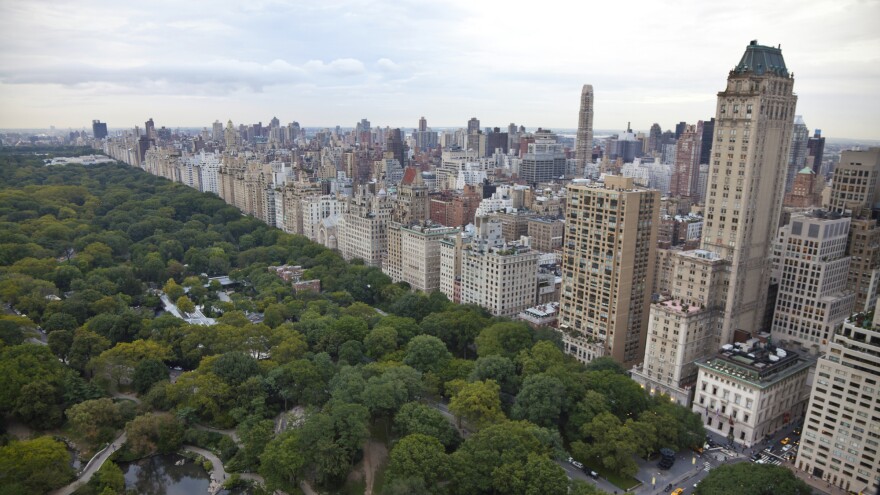Manhattan's Central Park is surrounded by one of the densest cities on the planet. It's green enough, yet hardly the first place most people would think of as biologically rich.
I think soil biodiversity is like the stars beneath our feet. There is so much going on.
But a team of scientists got a big surprise when they recently started digging there.
They were 10 soil ecologists — aka dirt doctors. Kelly Ramirez from Colorado State University was among them. "We met on the steps of the natural history museum at 7 a.m. with our collection gear, coolers and sunblock," she recalls.
Their goal: to collect about 600 soil samples from across the park and look for microbes. Why? Because Ramirez was the head of something called The Global Soil Biodiversity Initiative.
Given her love of dirt, Ramirez was the right person for the job. "I think soil biodiversity is like the stars beneath our feet," she says. "There is so much going on in the soil — it's just a hot spot, teeming with so many different types of organisms."
Microbes are architects of soil. They alter its chemistry, even its shape. And in terms of its microbes, Central Park was terra incognita.
So the team fanned out and dug. Onlookers were — well, blasé. This was New York City. "I think because they're used to weird things going on in the park," says Ramirez, "it just probably looked sort of normal that we were collecting."
On the other hand, the researchers found the work invigorating. Ramirez says many field trips can be rather boring. All you see are grasses, she says, "or maybe a deer once in a while." Collecting soil samples in the city was different.
"People were around eating hot dogs and ice cream and sunbathing," Ramirez says, "and we saw a Shakespeare parade go by — you know, you don't usually see that when you are sampling in the field."
And what the team found turned out to be very surprising — almost 170,000 different kinds of microbes. They didn't expect an urban park to measure up to the wild places they'd sampled around the world.
"There's as much biodiversity in the soils of Central Park as we found in the soil ... from the Arctic to Antarctica," says Ramirez, who's now at the Netherlands Institute of Ecology. She's including places like temperate forests, tropical forests and deserts. The species numbers are an average of all those places — some are a bit more or less diverse than Central Park. The team also found 2,000 species of microbes that are apparently unique to Central Park.
Why would a park be so diverse? Central Park has been heavily managed, with people adding lots of different kinds of plants, as well as fertilizer and chemicals. That created lots of different environments for a variety of critters to grow across the park. You can find out about all 170,000 of them in the current issue of the journal Proceedings of the Royal Society B.
Copyright 2021 NPR. To see more, visit https://www.npr.org.




